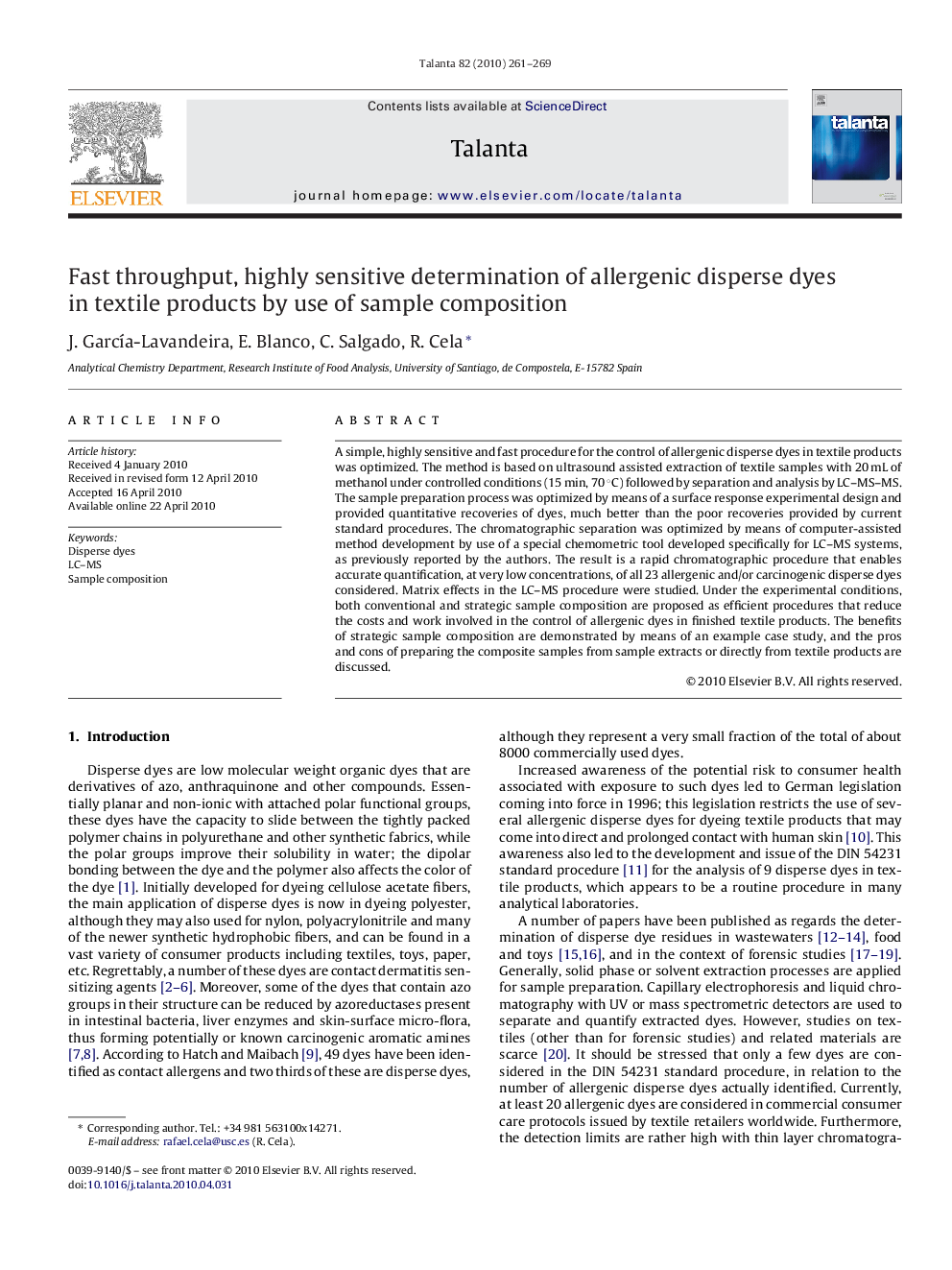| Article ID | Journal | Published Year | Pages | File Type |
|---|---|---|---|---|
| 1246357 | Talanta | 2010 | 9 Pages |
Abstract
A simple, highly sensitive and fast procedure for the control of allergenic disperse dyes in textile products was optimized. The method is based on ultrasound assisted extraction of textile samples with 20 mL of methanol under controlled conditions (15 min, 70 °C) followed by separation and analysis by LC-MS-MS. The sample preparation process was optimized by means of a surface response experimental design and provided quantitative recoveries of dyes, much better than the poor recoveries provided by current standard procedures. The chromatographic separation was optimized by means of computer-assisted method development by use of a special chemometric tool developed specifically for LC-MS systems, as previously reported by the authors. The result is a rapid chromatographic procedure that enables accurate quantification, at very low concentrations, of all 23 allergenic and/or carcinogenic disperse dyes considered. Matrix effects in the LC-MS procedure were studied. Under the experimental conditions, both conventional and strategic sample composition are proposed as efficient procedures that reduce the costs and work involved in the control of allergenic dyes in finished textile products. The benefits of strategic sample composition are demonstrated by means of an example case study, and the pros and cons of preparing the composite samples from sample extracts or directly from textile products are discussed.
Keywords
Related Topics
Physical Sciences and Engineering
Chemistry
Analytical Chemistry
Authors
J. GarcÃa-Lavandeira, E. Blanco, C. Salgado, R. Cela,
